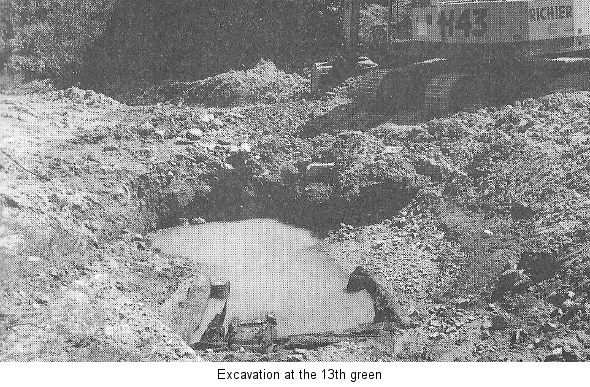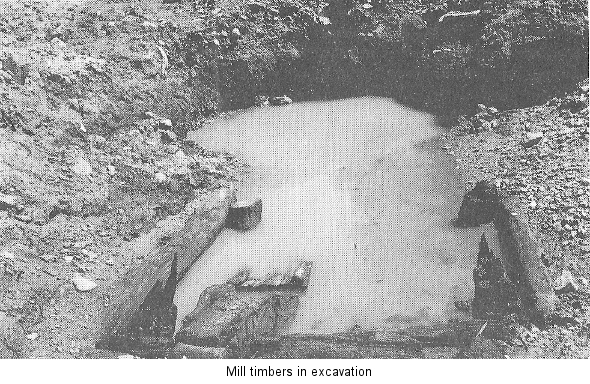Journal Volume 2 1995
Horizontal Water Mill at Newcastle
Revd. Canon Robert Jennings
In June 1993 when Mr. 'Torry' Stringer of Leabeg, Newcastle, was excavating land with his track machine on behalf of Mr. Andy Byrne of Newcastle Upper, Co Wicklow, the bucket struck timber beams some six feet below the surface of the ground. The work was in connection with the construction and layout of a Par 3 Golf Course on Mr. Byrne's farm.
Work on that particular area was discontinued until further investigation confirmed that what had been so unexpectedly uncovered was an ancient Horizontal Water Mill.
The Board of Works was contacted by the Byrne family and they sent several experts to examine the remains of the mill and confirmed that a horizontal water mill of over 1,000 years of age had indeed been found.

The site of the mill is on private land in the townland of Upper Newcastle. Starting from Newcastle Church of Ireland Church, follow the old historical road over the new bridge on the Little Vartry river for 300 yards. Turn right at the sign "Castlebrook Crafts" and follow the private road for a further 330 yards which leads into the yard of the Byrne family's homestead. Here you cross over the river, and continue west along the river until you reach the 13th green of the golf course at the entrance of the Big Glen Wood. At this point you may be disappointed as the horizontal water mill now lies buried once more under the 13th green of the Glen Mill Golf Course.

The mill lies quite close to the river at the bottom of a steep glen covered in hazel, ash, holly, willow beech, alder and many other species of trees. The upper side of the glen is covered with extensive bracken and briars.
What was revealed at this site were the substantive oak beams of the lower mill house which housed the wooden mill wheel. A few of the paddles were also recovered and resemble in size and shape the ladle-like blade of an oar. The wooden chute which directed the water into the blades was also clearly seen. This wooden chute for the water flow appeared to have been constructed from a single split oak tree cut and chiselled out to form a deep channel. The timber of the water chute narrowed considerably as it reached the blades of the water wheel thus providing a greater force of water to turn the wheel. Further timbers were roughly excavated back towards the river along the mill race which had originally been constructed to take the necessary flow of water from the river. A piece of granite from the outside edge of one of the millstones was also recovered. All the remains of the mill lay buried under wet peaty soil and gravel.
The Board of Works, having closely inspected the site and the remains of the mill, said it was one of the least damaged mills known to them. They took samples of the oak timbers and paddles so that they can accurately date its construction by the most modern and accurate method of dendrochronology.
They advised that as there was now considerable knowledge of horizontal water mills in Ireland they would not at present be interested in preserving it for viewing. They have taken accurate details of the site so that at some future date it could be excavated once more. The preservation of the wooden mill for over 1,000 years lay in the fact that it was buried in water logged conditions like numerous other wooden objects such as wooden roadways, dugout canoes and household containers that continue to be discovered in similar situations throughout Ireland.

